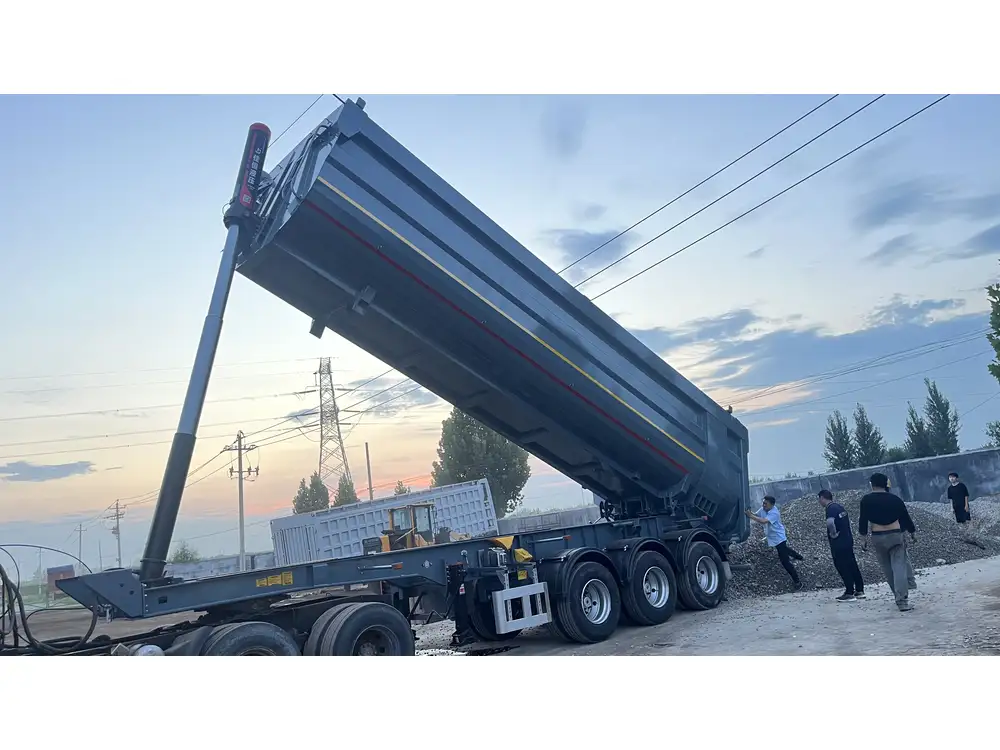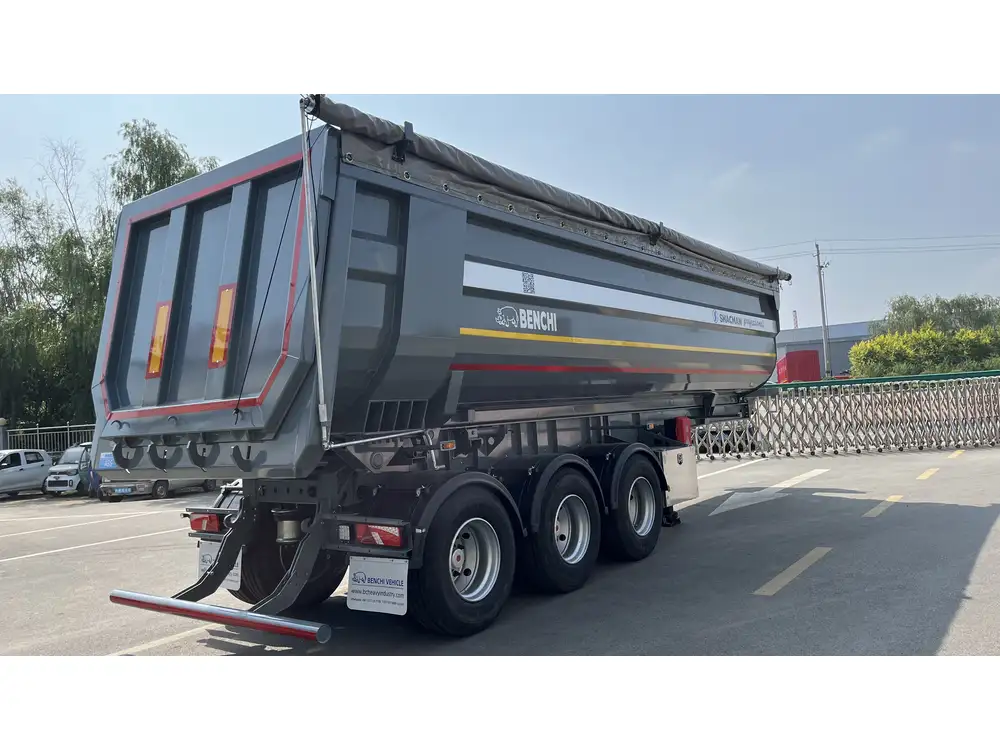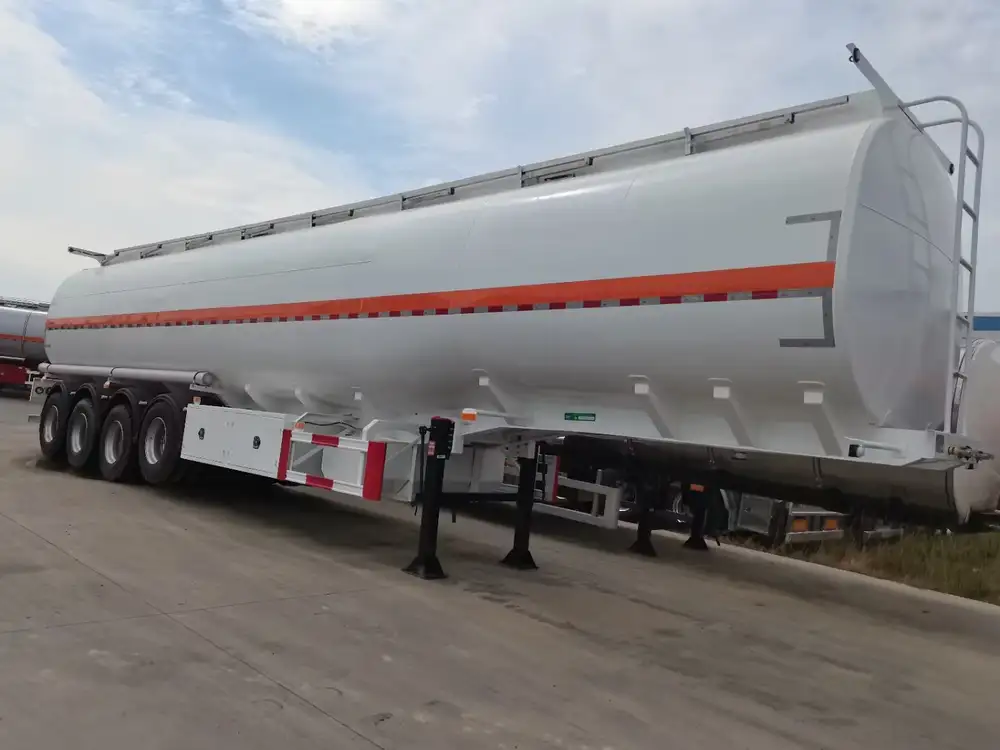When it comes to the transportation industry, understanding the dimensions of semi-trailers is pivotal. This is especially true in Australia, where regulations and road infrastructure significantly influence vehicle sizes. If you’re a fleet operator, logistics manager, or simply curious about the semi-trailer specifications in Australia, this article aims to dissect the essential information regarding their lengths, regulations, and practical considerations.
Table of Contents
- Understanding Semi Trailer Lengths in Australia
- Standard Semi Trailer Lengths
- Factors Influencing Semi Trailer Length
- Types of Semi Trailers and Their Dimensions
- Regulatory Framework Governing Semi Trailer Dimensions
- Implications for Transportation and Logistics
- Conclusion
Understanding Semi Trailer Lengths in Australia
In Australia, semi-trailers are a common sight on the roads, carrying everything from consumer goods to construction materials. A semi-trailer consists of a trailer with wheels and an attached tractor unit. The total length is an amalgamation of both parts, which can vary significantly based on various regulations and the type of cargo being transported.

Average Semi-Trailer Lengths
The typical lengths of semi-trailers in Australia are defined by the National Heavy Vehicle Regulator (NHVR), which is responsible for providing guidelines and frameworks that ensure compliance with safety standards.
| Type of Semi Trailer | Typical Length (meters) |
|---|---|
| Standard Semi-Trailer | 13.7 |
| B-Double | 25.0 |
| Road Train | Up to 53.5 |
Key Point: The standard semi-trailer length of 13.7 meters is not just a guideline but a regulated measure that operators must adhere to for compliance.
Standard Semi Trailer Lengths
Understanding the standard lengths of semi-trailers is crucial for operators and manufacturers alike. Here’s a detailed breakdown:

1. Standard Semi-Trailer
- Length: 13.7 meters
- Width: 2.5 meters (up to 2.6 meters with approved permits)
- Height: Limited to 4.3 meters
This length accommodates most freight requirements effectively while adhering to regulations. It is widely utilized for transporting general freight, including consumer goods, machinery, and more.
2. B-Doubles
- Length: Up to 25.0 meters consisting of two trailers.
- Maximum in,” 26.0 meters with special permits.
B-doubles are designed for efficiency, allowing for more cargo without increasing the number of vehicles on the road, thereby minimizing traffic congestion.
3. Road Trains
- Length: Up to 53.5 meters
- Composition: Can consist of three trailers.
Road trains are primarily used in rural areas, particularly for long-distance transport of bulk goods. They provide an economical solution for transporting large quantities of freight.

Comparison of Semi Trailer Types
| Semi Trailer Type | Max Length (m) | Cargo Capacity (t) | Common Uses |
|---|---|---|---|
| Standard Semi-Trailer | 13.7 | 22 | General freight |
| B-Double | 25.0 | 36 | Bulk freight, containers |
| Road Train | Up to 53.5 | 100+ | Bulk transport in remote areas |
Factors Influencing Semi Trailer Length
Several factors dictate the length of semi-trailers used in Australia, encompassing legal restrictions, efficiency, and practical needs of the industry.
1. Road Regulations
State-specific regulations can impact the allowable dimensions for vehicles. Variations in road infrastructure, such as bridge heights and road widths, necessitate different standards.

2. Cargo Type
The nature of the cargo also influences the choice of trailer. For instance, refrigerated units may be designed differently than those used for flatbed applications.
3. Operational Efficiency
Longer trailers can carry more, leading to fewer trips. However, they can be less maneuverable. Operators must weigh the trade-offs between capacity and operational flexibility.
4. Environmental Considerations
In recent years, there has been an increasing push towards sustainability in transport. Longer trailers can reduce fuel consumption per ton of freight, adopting practices that align with environmental standards.

Types of Semi Trailers and Their Dimensions
1. Flatbed Trailers
- Length: Typically up to 13.7 meters
- Usage: Ideal for heavy machinery, construction materials, and oversized items.
Flatbed trailers allow for easy loading and unloading from the sides, often preferred for items that can’t be easily contained within walls.
2. Curtainsiders
- Length: 13.7 meters
- Usage: Versatile for general freight, providing easy access thanks to their retractable tarpaulin sides.
These are particularly beneficial for freight that requires quick loading and unloading.

3. Refrigerated Trailers
- Length: 13.7 meters
- Usage: Transport of temperature-sensitive goods such as food products.
The importance of maintaining temperature control in refrigerated trailers is paramount for perishables.
4. Tippers
- Length: Varies, typically 13.7 meters
- Usage: Used for bulk materials like sand, gravel, and other construction supplies.
The tipping mechanism allows for easy unloading without the need for additional equipment.
Regulatory Framework Governing Semi Trailer Dimensions
The legal standards governing the dimensions of semi-trailers in Australia are formulated to ensure safety and efficiency on the roads. Key legislations include:

1. Heavy Vehicle National Law (HVNL)
The HVNL is the primary framework that regulates heavy vehicles, including semi-trailers. It encapsulates various guidelines regarding vehicle dimensions, including:
- Maximum allowable lengths
- Weight restrictions
- Safety standards
2. National Heavy Vehicle Regulator (NHVR)
The NHVR oversees compliance with various regulations. It issues permits for vehicles exceeding standard dimensions, focusing on ensuring that road safety is not compromised.
Implications for Transportation and Logistics
Choosing the appropriate semi-trailer length has far-reaching implications for transportation and logistics companies.

1. Operational Costs
Using longer semi-trailers can lead to cost savings through reduced trips. However, this must be balanced against potential road access restrictions for larger vehicles in urban areas.
2. Safety Considerations
Longer trailers require specialized handling and additional training for drivers. Safety measures include ensuring adequate braking systems, visibility, and maneuverability.
3. Fleet Management
Effective fleet management incorporates the careful selection of trailer types based on specific transport routes, cargo, and customer needs.

4. Environmental Impact
As road freight contributes significantly to greenhouse gas emissions, selecting the right trailer length can optimize fuel efficiency and reduce the carbon footprint of operations.
Conclusion
Understanding semi-trailer lengths in Australia is crucial for both operators and manufacturers. The regulatory framework provides significant guidance regarding the operational scope of different trailer types, with standards set by bodies like the NHVR ensuring safety and compliance on the roads. From standard semi-trailers to road trains, the dimensions play a pivotal role in determining operational efficiency and safety.
Whether you are selecting a semi-trailer for your business or simply exploring the logistics of freight transportation in Australia, knowing the specifications, regulatory requirements, and operational implications can enhance efficiency and drive business success. Striking a balance between cargo capacity and adherence to regulations not only ensures compliance but also optimizes overall transportation strategy.
By staying informed about these dimensions and considerations, operators can make educated decisions that facilitate smooth and effective transportation processes in the expansive Australian landscape.



